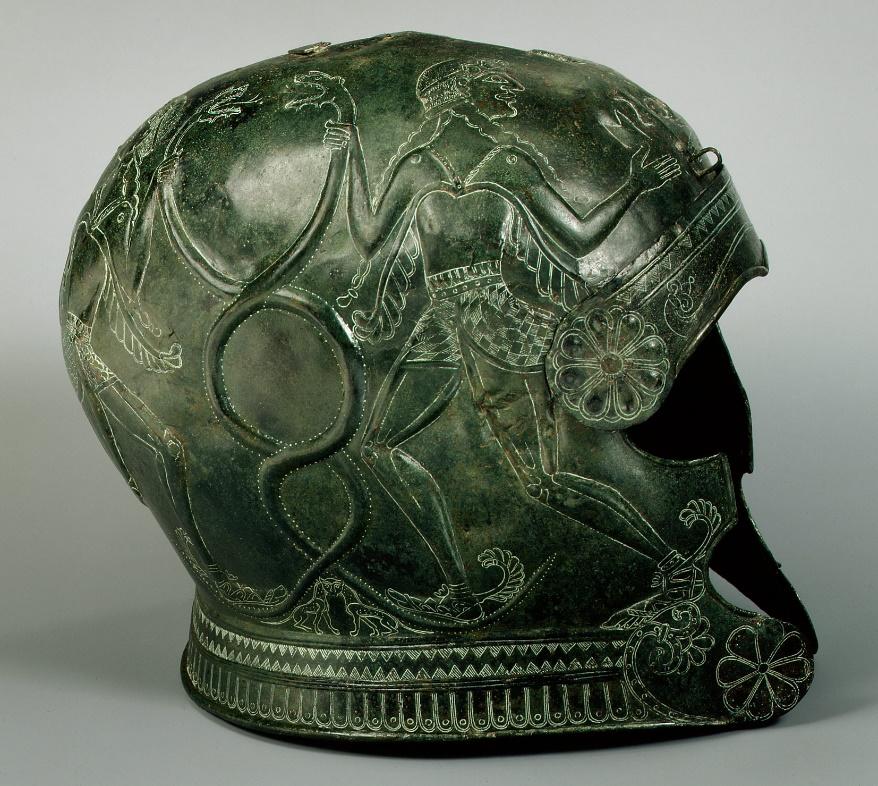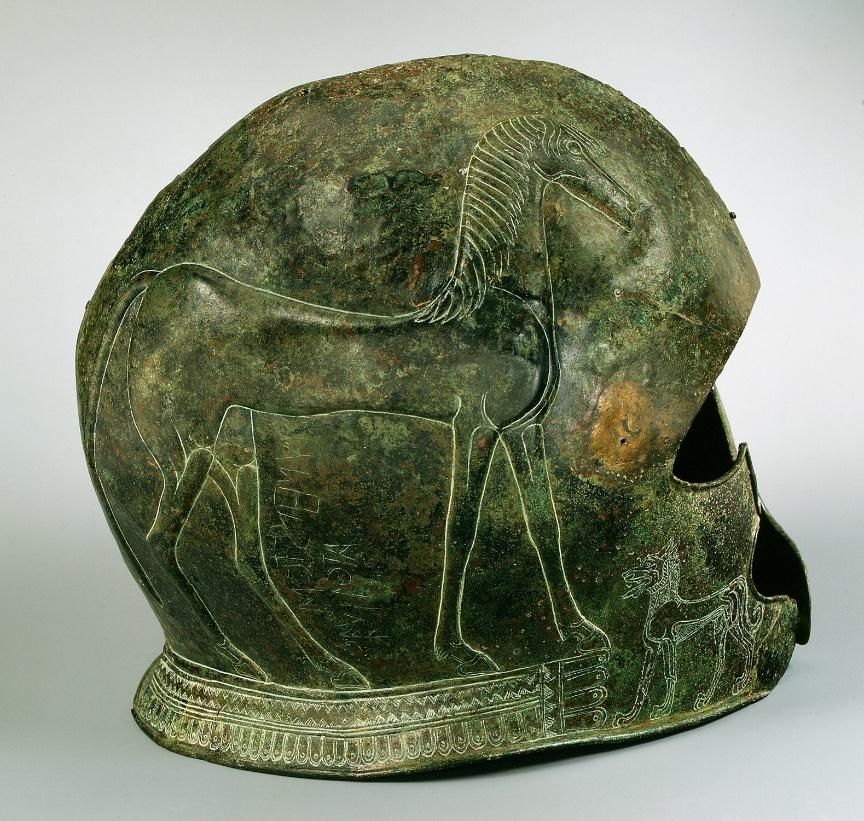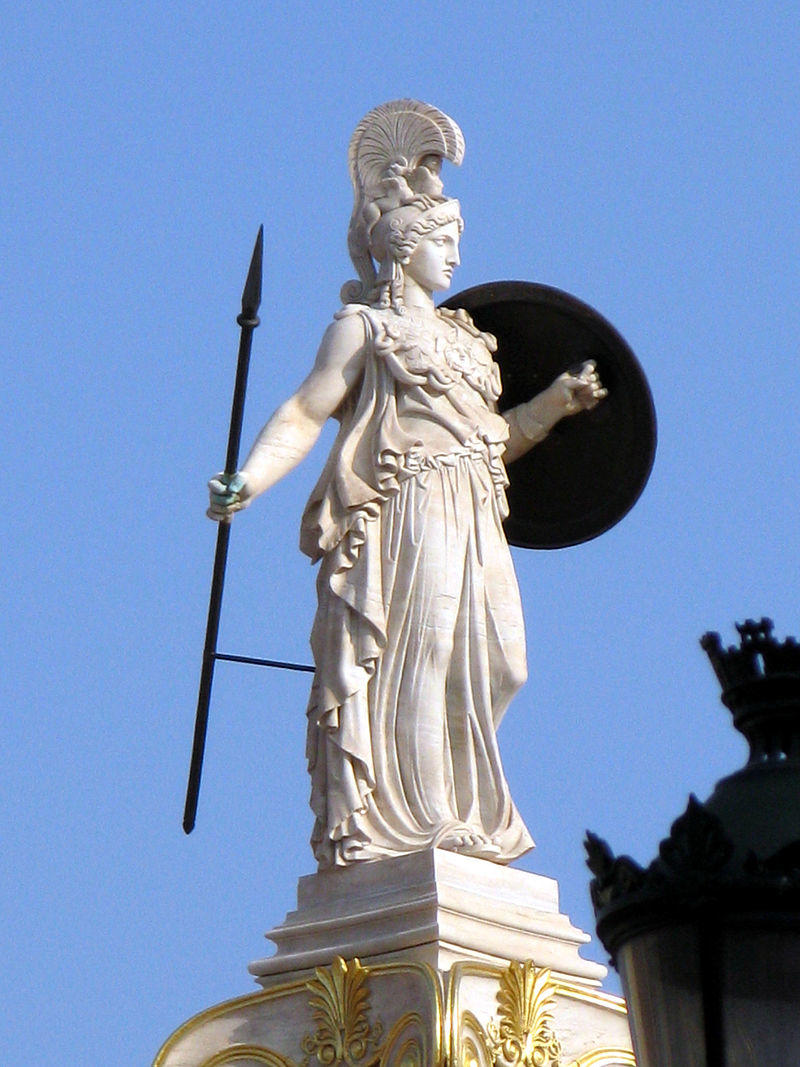Description of the Exhibit
While visiting the Ancient Greece Architecture Gallery which is located at the Metropolitan Museum of Art, I selected a piece of art that expressed the main features of Ancient Greek Culture. The chosen exhibit is two bronze helmets (see Picture 1,2).


The helmets belong to the late 7th century BCA. Along with the three mitral that were exhibited with them are ones of the finest examples of armor that was found in the south of Crete, where they were obviously made. According to the inscriptions on the armor, the helmets were captured as a trophy and served as a dedication. In repoussé, there is an image of a pair of young people with wings that hold a couple of intertwined snakes. Below them, there are two panthers with ordinary heads. Additionally, there is an inscription on the helmet which says: “Neopolis”. On the other helmet, there is a picture of a horse on both sides and on the front, there is a lion (Karoglou, 2016). The inscription on the second helmet says that the son of Euklotas, Synenitos, possessed this object.
Similar Examples from the Textbook
The main materials of which most ancient Greek sculptures were made are terracotta, bronze, and ivory. There are many examples of objects made of these materials in the textbook which resemble those that I saw at the museum. For example, there are many pictures of terracotta statuettes, such as terracotta statuettes of an actor, a doll, a standing woman with the articulated arms, a young boy sitting on a chair, and others. There are also bronze items including armor, statuettes, household items, and other objects which are approximately the same style and size. Among them are the bronze statuettes of Artemis, an Ethiopian, a horse, a warrior, and so on. In addition, there are a couple of examples of ivory objects.
Influence of Greek Architecture
Ancient Greece is often considered the cradle of western architecture. Indeed, its architecture, political thought, art, and literature have had a major impact on the western world for more than a thousand years. Regarding the architecture, the influence of Ancient Greece is the most outstanding. Greek architects built some of the finest buildings in the entire Ancient World (Karoglou, 2016). Even today, some of their structures, such as stadia, temples, theaters, and many peculiarities of their buildings are used as a foundation for the construction of modern structures.
The ancient Greek architectural styles are divided into three types, namely, Doric, Ionic, and Corinthian. Doric is one of the oldest architectural orders existing today. Its peculiarities are vertical columns and a plain roof and on the facade. A vivid modern example of this style in the U.S. is Perry’s Victory and International Peace Memorial in Ohio. The Ionic order is more elegant, intricate, and delicate than Doric style. This style was dominant in Ancient Greece during the Hellenistic period. A vivid modern example of this style in the U.S. is the Virginia State Capitol building. The Corinthian order is very similar to the Ionic style but with more sophisticated details (Karoglou, 2016). Illustrative modern examples of this style in the U.S. are the U.S. Capitol building and the U.S. Supreme Court building.
Additionally, the consequences of this impact can currently be observed in almost every big city in Europe and the U.S. It is preserved primarily in small details, such as the columns of theaters, the facades of buildings, the bas-reliefs of churches, and various sculptures. Another example of the influence of ancient Greek architecture is the Athena Column by Leonidas Drosis in front of the Academy of Athens (see Picture 3).

Other illustrative examples of the influence of ancient Greek architecture on modern architecture include such famous structures as the Prado Museum in Madrid, the Lincoln Memorial in Washington, D.C., Cambridge University in Cambridge, England, and so on.
References
Athena column [Image]. (2016). Web.
Karoglou, K. (2016). The collection of Greek terracotta figurines at the Metropolitan Museum of Art. Les Carnets de l’ACoSt, 14(3) 6–7.
Two bronze helmets [Image]. (2016). Web.